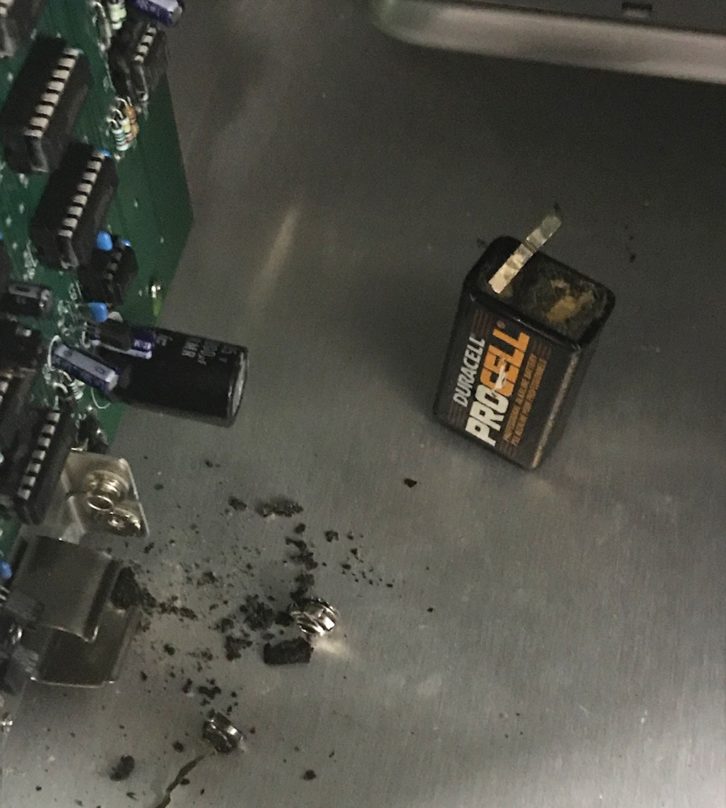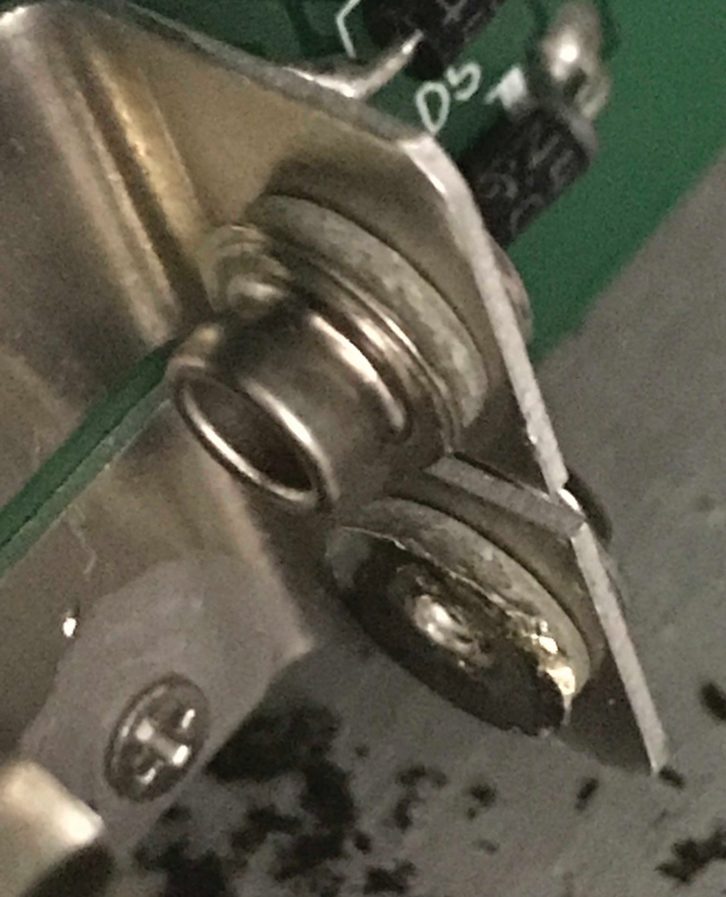Jim Leedham is a contract engineer in Omaha, Neb., and maintains many transmitter sites. Several have Broadcast Electronics transmitters. To keep memory presets in the event of a power failure, these rigs have a 9V battery located behind the hinged control panel. As a part of his maintenance procedure, Jim replaces the batteries yearly.

Recently, Jim performed this maintenance task on a BE FM1C1 1kW FM transmitter. However, when he attempted to remove the battery, the battery terminal came with it, seen in Fig. 1. One of the two sockets that make up the battery terminals actually broke off, shown in Fig. 2.

This battery is important. It keeps transmitter presets alive, should there be an AC mains power failure.
Jim was able to cobble a replacement socket until the actual part arrived from BE. But in sharing this tip with Workbench readers, he offers a couple of warnings.
First, place a label on the front panel noting that a battery is inside. Do this as a courtesy to other engineers who may not be familiar with this equipment.
Second, if you maintain these transmitters and encounter a power failure, beware! If the battery is dead, when power is restored and you attempt to restart the transmitter you’ll get zero RF output!
Since the battery kept the memory preset, if there’s no battery voltage, there’s no preset; the power goes to zero. It’s a simple process to press the “RAISE” power pushbutton, until the appropriate power level is achieved. As engineers, however, we always seem to look for the worst. It could never be as simple as just pressing the “RAISE” power button!
Jim is right, I had this problem on a higher-power BE unit years ago, and wasted time trying to troubleshoot why I had plate volts but no plate current or RF output. Talk about feeling foolish.
So now you know. Replace those batteries. Note the date of replacement on the side of the battery with a Sharpie or other brand of marker. If you make a chart of equipment needing batteries, you can replace them all, along with your smoke and fire detectors, at the same time each year.
What’s nice about the BE product is that you can replace the battery any time, not just during a maintenance session; that front panel is not interlocked. And if your timing is such that the power fails while you’re in the process of replacing the battery, at least you know how to get the transmitter back on the air.
By the way, if that scenario happens to you, make sure you buy a lottery ticket!
***
Frank Hertel, principal of Newman-Kees RF Measurements and Engineering in Evansville, Ind., has an older computer in his shop that is loaded with a 32-bit version of Windows 7. It is using a known “valid” issue of the operating system.
Recently, while on a phone call with a fellow engineer, Frank turned this computer on and noticed it was sluggish. He traced the slow speed as being due to the computer performing an update.
Frank continued to watch the process, while the long update continued. When it finally rebooted, the computer displayed a persistent screen message stating that his computer had an “Invalid Key.” It further stated that it was operating with an “Invalid Copy.”
The computer seemed to function normally, but it now presented the persistent message “ — Invalid — ” in the lower right of the screen. At various intervals Frank’s work would be interrupted by the presentation of a large message block in the middle of the screen. Canceling the message would let you continue to use the computer. There are other things it also did to try to get Frank to buy a “New Key.”
So, Frank went online to seek a fix. He located this site that repaired the problem: https://www.itechfever.com/how-to-fix-windows-7-not-genuine-error/.
If your valid issue of Windows 7 all of a sudden is nagging that your computer has an “Invalid” issue of Windows 7, you might give one of the methods on the site a try.
***
I really enjoy finding topics that generate great reader comments. The sticky issue of removing audio tape cartridge labels turned out to be one of those topics.
Curtis Media’s Dave Dalesky wrote that a former PD showed him how to apply either oil or peanut butter to the old label so it would come off easily. Maybe so, but I also envision the hungry overnight jock licking the carts. Maybe it’s a good thing we now trust computers with our audio playout!
Send Workbench tips and high-resolution photos to [email protected].
John Bisset has spent 50 years in the broadcasting industry and is still learning. He handles western U.S. radio sales for the Telos Alliance. He holds CPBE certification with the Society of Broadcast Engineers and is a past recipient of the SBE’s Educator of the Year Award.







